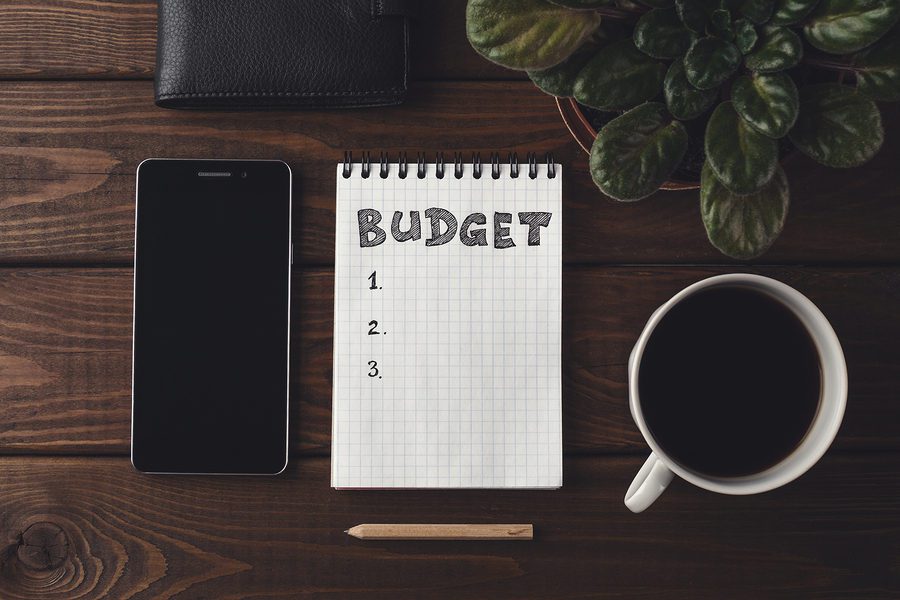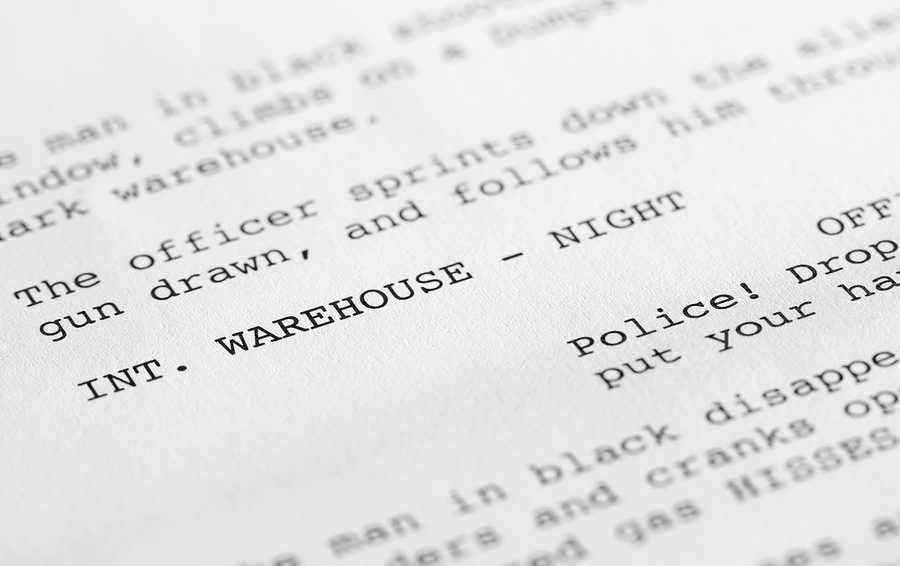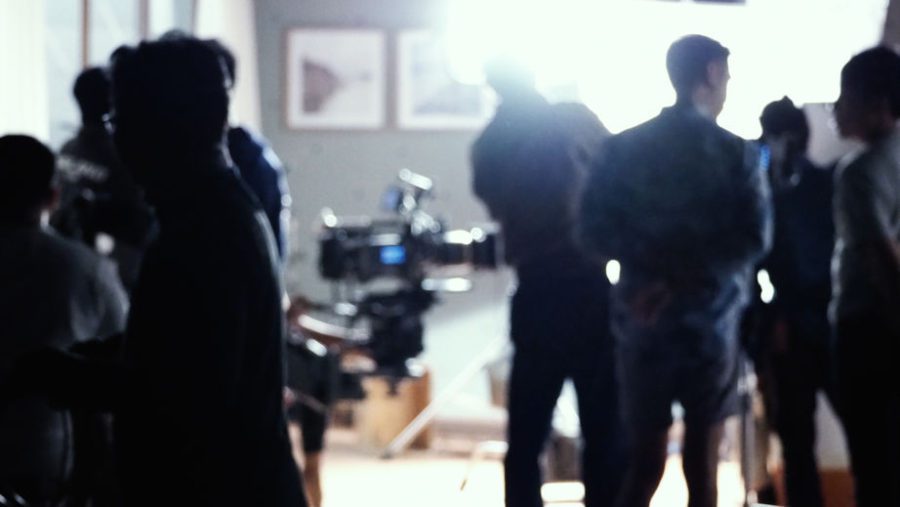DISCLOSURE: AS AN AMAZON ASSOCIATE I EARN FROM QUALIFYING PURCHASES. READ THE FULL DISCLOSURE FOR MORE INFO. ALL AFFILIATE LINKS ARE MARKED #ad
Movies have always inspired you, yes? The medium speaks to you in a way no other ever has, or, you’re thinking, probably ever will.
You subscribe to all the DIY YouTube channels; you’ve absorbed hours of interviews and podcasts featuring filmmakers talking about their craft; you’ve read and re-read articles like my previous one: How to Get into Filmmaking.
In short, you’re ready to tackle your first short film. Well, let’s get into how you do that.
Step One: The Script and Budget – Keep ‘em Simple

Ok boss, to make a short film, you’ve got to have a story to tell. In all the preparatory and preemptive watching of videos, listening to interviews, and reading of articles, it’s likely that you have a good old story bouncing around in that creative head of yours.
Now you need to get it out onto the page.
What should you consider when writing the screenplay of your first short? Well, unless you’ve recently come into a sizeable inheritance, your budget is going to be shoestring, if you have one at all.
This is the first of many major decisions. Do you want to spend any money or try to get by guerilla-style?
While it can be appealing to subscribe to rebellious, run-and-gun filmmaking, making shorts for nothing, most of the time you’ll end up with just that—an end product that looks like it was made with chewing gum and a paperclip. I don’t recommend it.
Choosing to spend even a tiny bit of money can help raise the production value of your film.
With that in mind, rule number one of low-budget filmmaking: Keep it as simple as possible.
Think about everything you’re going to need to pay for. Props, locations, equipment, possibly cast and crew, unless you can convince them to work for free, in which case you’d better have some damn good food on set to compensate.
Be economical with your choice of location
When working on a low budget, you have to get economical with your storytelling. My first completely independent short film, Human Instincts, had one location. That’s it.
Thanks to this, I was able to keep costs down and save time by eliminating company moves, by doing one big lighting setup on day one and then tweaking it over the next four days until breakdown, and by leaving the set dressed the entire shoot.
This left me enough saved money to splurge on great camera equipment—the RED Scarlet and some Canon prime lenses.
My choice to have only one location from the outset forced me to work out how to write a good story in a room we’d never be able to leave. This was a limitation I accepted at the start and what ultimately led to a positive outcome by allowing for a better camera and lenses.
“But we’re talking about the script, not shooting!” Right. If your story is something you want to bring to life yourself, then you need to think about this stuff from the very first word on the page.
If you’re looking to write the most bombastic story, budget be damned, that’s fine too, but then you’re not looking to be a filmmaker, you’re looking to be a screenwriter. Filmmakers work within imposed limitations and find creative ways to work around them. This starts at the script level.
So, if you want to make the film, keep that script simple.
Step Two: The Scriptwriter’s Software

Like everything else in filmmaking, scriptwriting software is notoriously expensive. If you want to write your first script without mortgaging your house or choosing which of your kids isn’t going to college, then free alternatives are a must.
I can’t recommend Word or some equivalent text program, as it will be a nightmare for you to arrange correctly into screenplay format. Instead, take a look at Celtx or Trelby. These are solid free alternatives that format the script for you and are easy to use.
Celtx is a bit more user-friendly from the UI perspective, but has been abandoned by its creators in favor of a newer paid version and has ceased receiving updates, so finding the last free version (2.9.7) requires a bit of digging online.
Trelby is a bit more complicated to use, but is consistently being updated for free by its devs, so features it doesn’t have today may theoretically be added in tomorrow. It also boasts a plethora of exportable file types, including Final Draft’s FDX in case you do eventually upgrade.
You decide which is right for you.
Step Three: The Cast and Crew

Hopefully, you checked out my previous article that expounded at length the benefits of having a creative posse to join you in all your filmic endeavors. If you did, nice work, the hard part’s over because you’ve got your crew.
If you guys are tight and help each other out, favor for a favor, then you’re even better off budget-wise because you can focus all your funds on logistics and equipment.
If you don’t have a go-to group, then you’ve got a slightly steeper hill to climb for this part. You’re going to need to find a solid crew to help you out.
You’ll have to determine exactly what’s necessary based on your script and what you’re going for, but the general makeup of a skeleton crew is as follows: The director (you), the director of photography (DP), a gaffer or grip, a sound mixer and/or boom operator, a makeup artist (depending on the genre of your film), and a production assistant (PA) or two.
This is a barebones crew, giving most crewmembers an umbrella of jobs. You’ll be playing director, first assistant director, and script supervisor. The DP will be his or her own first assistant camera, and quite possibly gaffer. The PAs will vacillate between art department and camera.
What about the sound person? Well, it’s best you leave them to their one job. Good sound can make or break a film, especially a low-budget short that doesn’t necessarily have fancy effects or eye-catching stars to offset some clunky technical aspects.
This type of multi-rolled set experience can be a blessing in disguise. Learning how to do many jobs makes everyone more versatile when the time comes to work on bigger sets that don’t have to worry about budget constraints. It makes you more marketable when you can grip, set dress, and AC if necessary.
But… what about a producer?
You may have noticed that I’ve left out one key role: The producer.
No, not the executive producer. That’s Hollywood lingo for the guy with the cash who funds a film. Being that yours is an indie film, and a short film at that, you won’t be needing to worry about executive producers getting involved just yet.
I’m talking about the standard producer—the logistical wizard of your film, the person who tackles all the non-creative responsibilities involved.
Unfortunately, even this is give-or-take with indie filmmaking, especially shorts. Likely as not, being the writer and director of a short film also makes you the de facto producer.
Casting sessions, rehearsals, location scouts, fundraising, equipment rentals, call sheets. In short, all the logistics will fall to you.
This can be tough to balance when you’re also wrapped up in the creative heart of the film: working with actors, guiding the camera department, thinking about lighting, and every other artistic choice you’ll have to make.
If you’re lucky enough to know or can find someone who calls themselves a producer and specializes in the logistical quagmire of filmmaking, then lock them down for your project, because a better Atlas you won’t find to hold up the world of your production.
With your crew nailed down, it’s time to look to the cast.
Step Four: Casting

First off, what hopefully seems like an obvious piece of advice: unless they’re actively pursuing an acting career, never cast your friends in your film if they have no acting experience.
This might seem a tempting alternative to the hassle of the casting process, but cutting corners isn’t going to get you the result you want in your film. Just because you’re working with a shoestring budget doesn’t mean you sacrifice the quality of the elements in your control.
Performance is the fulcrum by which your entire film communicates itself to the audience. The emotional bridge on which your film relies is founded on the beams of your actors.
Subpar performances imperil the stability of this bridge and require a considerable counterbalance of quality in other departments that you most likely won’t have, to be overlooked by audiences.
Remember this: there are talented actors in every nook and cranny—creatives just like you, scraping by on their art or working a day job to support it. Go out and find them.
Make a casting notice
To do this, you need to create a casting notice. Draw up a document listing all the characters you need to cast for, their important personality traits, and any physical information that’s relevant.
Something like: John Smith, 20s, tall and fit build – A fresh young athlete new to the team. He is a fiery personality who often butts heads with the coach and veteran players.
Once you’ve got your roles listed, write your contact information and let candidates know what they need to send ahead of time and prepare beforehand. Most casting calls require actors to email to reserve a timeslot, send in their headshot and resume, and recite a prepared monologue.
Then list any other production information available, like the shoot dates if you have them and if the gig is paid or not. This will help avoid wasting anyone’s time by being as upfront as possible at this stage.
Publish the casting notice online
When your notice is ready, find Facebook groups dedicated to actors and casting and post it there. If you’re not averse to spending a little money, check out sites like Backstage.com, where you can get your notice to a lot of professional actors hidden behind the paywall.
Some film schools have a partnership with Backstage and other sites like it and will have promo codes for students’ free use of them. If you are or have a friend in film school, see if you can dig these up to save a buck.
Once your notice is circulating on the web, the submissions will start rolling in. Now you need a venue to host the event. The best places for free space are libraries, so check with the ones in your locale to reserve a meeting room for your allotted time.
And that’s all there is to it, apart from settling on your actors.
Casting etiquette is highly important once you’re in the room, but we’ll save that for another article. Suffice it to say, for now, keep it warm, but professional. You’re not there to be friends with the actors auditioning. This is a job you’re hiring for, after all.
Step Five: Rehearsals?
This may or may not happen depending on your timeline from casting to shoot dates. If you can swing it, one rehearsal before shooting is a nice way to get some broad strokes work done, like blocking (deciding when and where the actors will move and interact in a scene), and big character beats (changes in a character’s intention), with your cast.
You can use this time as director to talk over any questions the cast may have and work out any script changes you might want to make based on their feedback.
This will go a long way towards expediting progress on your actual shoot dates. When the actors know what they’re doing and how you want the performance, then you can get what you need in minimal takes and stay ahead of schedule.
Preparation is the name of the game.
Step Six: The Big Day(s)

All that planning was leading you to this moment. Production is upon you.
You’ve spent the night tossing and turning, thrown up most yesterday’s dinner, replaced it with coffee, questioned over and over again what the hell you were thinking doing something like this and who’s going to watch it and people will think your story is garbage and you’ll never do this again and…you’re ready to go.
Believe me, your first time? That anxiety will happen. Trust your cast and crew to do their jobs, trust yourself to do yours to the best of your ability.
Remember that, as director, every major decision is up to you, but your primary roll is to work with the actors, so don’t concern yourself with the minutiae of what everyone else is doing. You picked your crew because you’re confident in their skills, and they will come to you when they’re ready to show you their work. So trust them and let them do their thing.
If problems crop up, and they will, don’t panic. Instead, put your heads together to solve it creatively and brand the experience as the funny story it will become with time. Filmmaking is problem-solving on a collective scale.
Production is a unique experience. No two film sets are exactly alike, so enjoy the time you spend making your first short film.
When all’s said and done, grab a collective photo of all cast and crewmembers to commemorate the experience, because, while the next leg of the film stands before you in the guise of editing and post-production, your cast and crew will most likely not be moving on with you.
Step Seven: Editing and Post-Production
The film is shot, and you’ve got hours of footage to sift through for what will ultimately clock in at less than 20 minutes. To make sense of it all, to bring some semblance of order to the mess of video littering your hard drive, you’ve got to bring on an editor.
Again, if you or someone in your creative group knows of anyone, this is your best bet. Otherwise you’ll have to cast the net on Facebook film groups or Craigslist.
Once you have your editor, you’ll spend the next few days using them as an extension of your thoughts, telling them what you’re looking for, and slowly tracking and backtracking through the forest of footage until you build your rough cut.
From here, you’ll slowly tighten things up and solidify the film into its final form.
Good sound is half the film
Budget-dependent, you’ll also have a sound designer and mixer, who will build from scratch the soundscape for your film, as well as level all the dialogue so everything sounds uniform.
This is going to cost you, as it’s an intensive job, so if your budget doesn’t encompass a sound designer, then your editor will pick up the slack. If they’re experienced in indie film editing, they’re used to wearing many hats.
Color grading helps stress the tone and mood
Once the sound design and picture are locked, you’ll work through the color grading process with your editor to get the look you’re going for, whether it’s a washed-out neo-noir or warm-toned comedy.
It’s all shaping up quite nicely, but one thing’s still missing…
Step Eight: The Score

Unless you’re shooting for grounded realism or some type of abstractness, you’re going to want music in your film. Like your editor, this means finding a composer.
Now it’s possible that your editor, in their plucky skillfulness, can compose music as well, but it’s more likely that you’ll have to hire a dedicated composer.
This relationship will function in much the same way as with the editor: Explain what you’re looking for and where it needs to be placed, giving them exact timecodes if you can, and await their rough product. Rinse and repeat until you have a score evocative of the tone of your film.
Don’t worry if you’re not a musical person and verbalizing is hard for you. It’s not necessary to give your composer the exact instruments you’d like used. It’s enough to talk about emotion, what the goal of a scene is and what you’re trying to convey.
Be careful about giving them examples of exact music you want your score to sound like. A lot of composers hate hearing, “I want it to sound like X pop song that’s popular right now.” This takes all the creativity out of their work and is the equivalent of audio plagiarism.
If you want to give them a baseline, send over a few songs showcasing the tone of what you’re going for. This gives the composer some leeway in injecting their ideas into the score while still conforming to what you expect.
Success!
It’s been a road of trials and tribulations, but you’ve persevered, and months of work has culminated in a finished product that you’re hopefully proud of and excited to get in front of as many eyes as you can.
Before you dive into festival submissions and finding an audience for your film (which I’ll cover in a later article), take a step back and reflect on what you’ve achieved.
You’ve made a film. Short or long, a film is a film, and you’ve got one under your belt. Be proud of what you’ve accomplished and look forward to doing it bigger and better on your next go of it.
Bask a little in your glory, and then it’s back to work.
Got some other tips for making short films or just want to share your stories and experiences? Leave a comment below!

